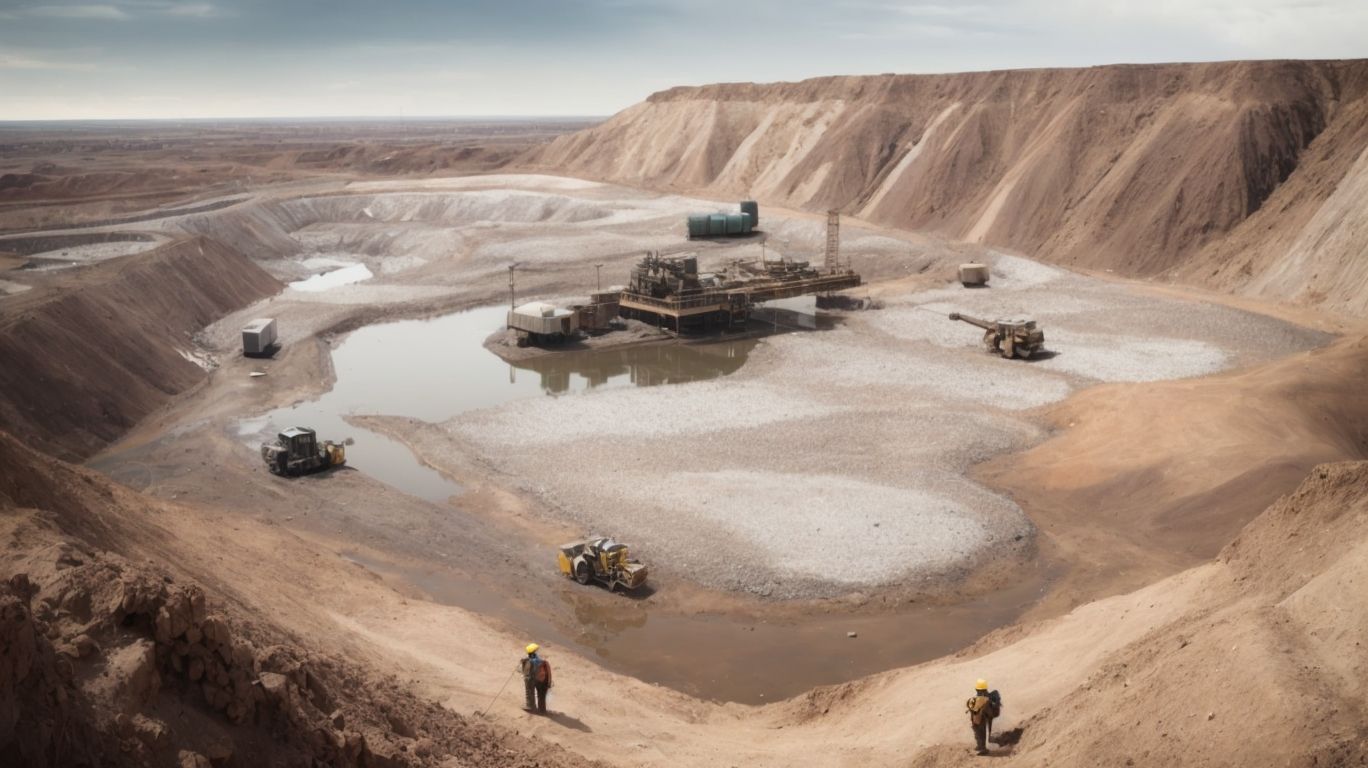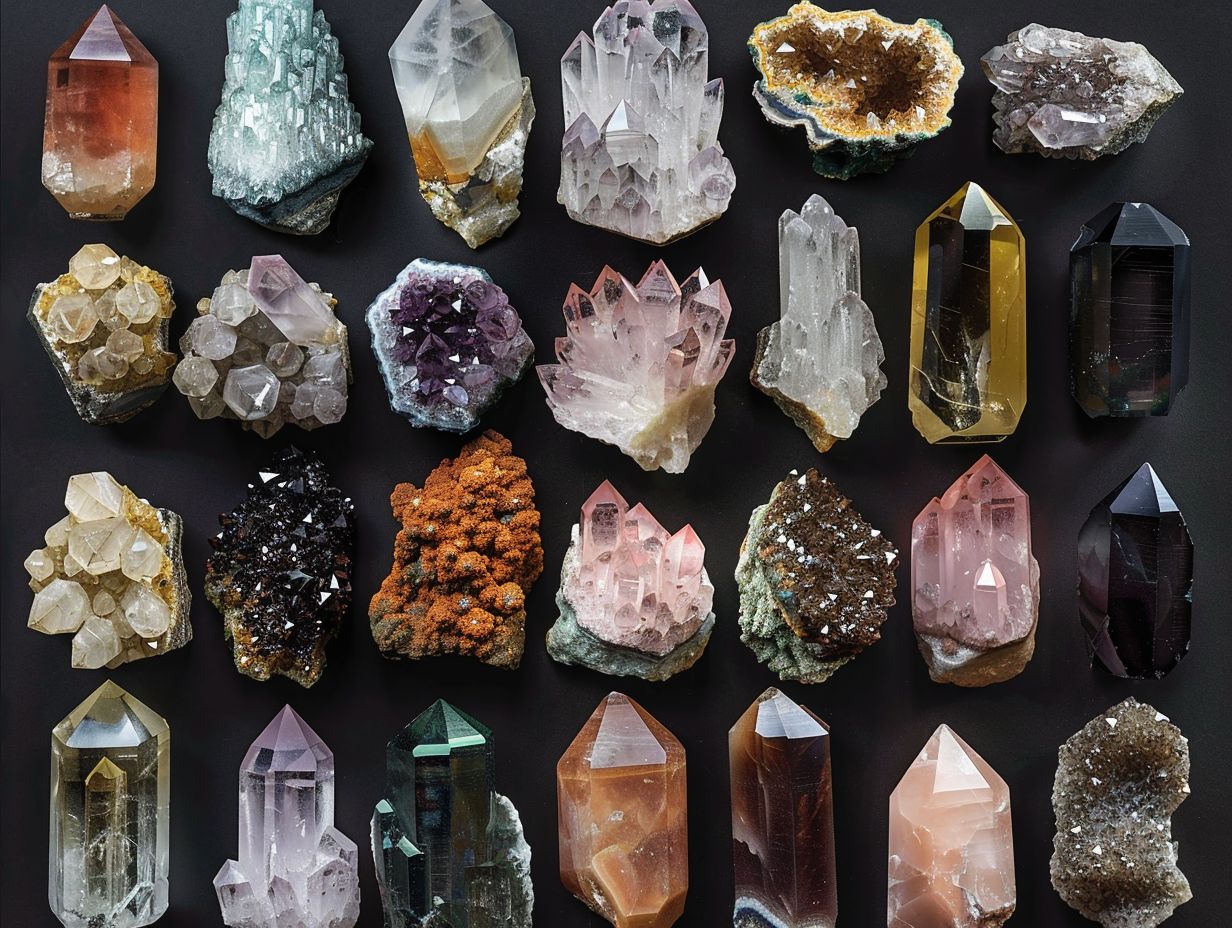
The Environmental Impact of Crystal Mining Explained
Crystal mining is a fascinating yet controversial industry that raises important questions about sustainability and environmental impact.
In this article, we will explore what crystal mining is, how it is done, and the types of crystals that are mined.
We will also discuss the uses of these crystals and the environmental consequences of mining, including deforestation, soil erosion, water and air pollution, loss of biodiversity, and disruption of local communities.
Delve into the regulations and laws surrounding crystal mining and explore ways to reduce its environmental impact through sustainable mining techniques, land reclamation, ethical sourcing, and alternative sources of crystals.
Join us as we uncover the complex world of crystal mining and its implications for our planet.
What Is Crystal Mining?
Crystal mining involves the extraction of valuable minerals and gems from the earth’s crust through specialized mining operations.
These mining operations usually require the use of heavy machinery, explosives, and other specialized tools to access the crystal deposits deep within the earth. The process starts with identifying the location of crystal-rich areas through geological surveys and exploratory drilling. Once located, miners use various extraction methods such as open-pit mining, underground mining, and placer mining to access the crystals.
The crystals obtained from mining operations play a crucial role in various industries, including jewelry making, technology, healing practices, and even in spiritual rituals.
How Is Crystal Mining Done?
Crystal mining is carried out through a meticulous extraction process that involves locating, extracting, and processing mineral resources to obtain valuable crystals.
- Exploration is the initial phase in crystal mining, where geologists analyze geological surveys and satellite imagery to identify potential mining sites.
- Once a suitable location is identified, excavation begins using various machinery and tools such as drills and explosives to uncover the crystals embedded in the rock.
- The extracted ore is then transported to processing facilities where it undergoes crushing, grinding, and sorting to separate the valuable crystals from the surrounding rock material.
- Refining techniques such as thermal treatment and chemical processes are employed to enhance the purity and quality of the crystals before they are ready for market.
What Are The Types Of Crystals That Are Mined?
Crystal mining yields a diverse range of crystals, including quartz, diamonds, emeralds, and sapphires, each with unique properties and applications.
These crystals play essential roles in various industries and applications. For instance, quartz crystals are widely used in electronics for their piezoelectric properties, facilitating precise timekeeping in watches and stable frequency control in electronic devices. Diamonds, known for their hardness, are not only prized in jewelry but also find applications in cutting tools for their exceptional durability. Emeralds, revered for their vivid green color, are sought after in the jewelry industry and are believed to bring harmony and growth. Sapphires, available in various colors, are popular for their use in high-end jewelry design and industrial applications such as creating scratch-resistant glass.
What Are The Uses Of These Crystals?
The crystals obtained from mining operations find extensive applications across industries, serving as essential components in various industrial and technological processes.
Crystals play a crucial role in the manufacturing sector, where they are utilized for precision cutting and grinding tools. In the field of electronics, crystals are integral to the functioning of electronic devices such as smartphones and computers, where they provide stable frequency references. In the healthcare industry, crystals are used in diagnostic tools like ultrasound machines and X-ray equipment. These versatile gemstones also have applications in energy production, with solar panels harnessing the power of crystals to convert sunlight into electricity.
What Is The Environmental Impact Of Crystal Mining?
Crystal mining has significant environmental implications, leading to ecosystem disruption, environmental degradation, and pollution through activities such as waste disposal, deforestation, water and soil contamination, and air quality degradation.
These activities not only harm the immediate mining site but also have far-reaching consequences on surrounding ecosystems. The extraction of crystals often involves the clearance of large areas of land, leading to habitat destruction and loss of biodiversity. This disruption can have a cascading effect on the delicate balance of flora and fauna in the region, impacting the food chain and overall ecological health. The chemicals and heavy metals released during the mining process can seep into the soil and water sources, posing a threat to both wildlife and human populations.
Deforestation
Deforestation resulting from crystal mining operations contributes to environmental degradation, habitat loss, and the decline of biodiversity in affected areas.
This widespread deforestation not only disrupts the delicate balance of ecosystems but also threatens the survival of numerous plant and animal species. As trees are felled to make way for mining activities, vital habitats are destroyed, leaving many species without homes or sources of food. The loss of biodiversity due to deforestation can have cascading effects, impacting the overall resilience of ecosystems and their ability to adapt to environmental changes. Conservation efforts are crucial in safeguarding these ecosystems and restoring balance to areas ravaged by crystal mining.
Soil Erosion
Soil erosion due to crystal mining activities poses a significant environmental threat, necessitating conservation efforts to prevent soil degradation and maintain ecological balance.
This erosion occurs when the natural vegetation cover is disturbed during mining operations, leaving the soil vulnerable to wind and water erosion. As a result, sediment runoff into nearby water bodies can harm aquatic ecosystems and affect water quality.
Implementing erosion control measures such as contour plowing, terracing, and reforestation can mitigate these impacts and help stabilize the soil. Adopting sustainable land management techniques like crop rotation and cover cropping can enhance soil structure and fertility, promoting long-term environmental sustainability in mining areas.
Water Pollution
Water pollution from crystal mining operations can have detrimental effects on aquatic ecosystems, highlighting the need for sustainable practices to mitigate pollution and protect water resources.
The process of crystal mining involves various activities such as excavation and transportation, which can release harmful substances like heavy metals and sediments into nearby water sources, significantly impacting water quality.
To address these environmental concerns, implementing sustainable practices like utilizing environmentally-friendly mining techniques, proper waste management, and reclamation efforts can help minimize the pollution generated from mining operations.
Effective water quality management strategies such as regular monitoring, treatment of contaminated water, and implementing buffer zones around mining sites can further prevent pollution and ensure the preservation of aquatic ecosystems.
Air Pollution
Air pollution generated by crystal mining activities can lead to degradation of air quality and contribute to greenhouse gas emissions, necessitating the implementation of mitigation strategies to reduce environmental impact.
One effective approach to minimize the environmental footprint of crystal mining operations involves employing pollution control measures such as implementing dust suppression techniques, utilizing enclosed conveyors to reduce particle emissions, and implementing strict monitoring protocols to track and limit pollutants released into the atmosphere.
Emission reduction techniques like investing in cleaner technologies, such as electric vehicles for transportation within mining sites, and optimizing energy usage through renewable sources can significantly decrease the overall environmental impact of crystal mining activities.
Loss Of Biodiversity
The loss of biodiversity resulting from crystal mining operations poses a threat to ecological balance and necessitates conservation efforts to protect endangered species and habitats.
This biodiversity loss can disrupt the delicate interconnections within ecosystems, leading to cascading effects on vegetation, wildlife, and ultimately, human livelihoods.
Recognizing the urgency of the situation, various conservation initiatives have been implemented to mitigate the impact of mining activities. These efforts include habitat restoration projects, reforestation campaigns, and the establishment of protected areas to safeguard biodiversity hotspots.
By engaging in sustainable practices and promoting environmental stewardship, individuals and organizations can contribute to the preservation of our planet’s valuable natural resources.
Disruption Of Local Communities
The disruption of local communities caused by crystal mining activities can have profound social impacts, underscoring the importance of community engagement and corporate responsibility in addressing community needs.
Engaging with local stakeholders and involving them in decision-making processes is essential for creating a positive relationship between mining companies and the communities affected. Companies can implement various strategies such as holding regular community consultations, providing education and training opportunities, and ensuring fair compensation for land use. By prioritizing the well-being of local residents and collaborating with them on sustainable development projects, mining companies can build trust and foster mutually beneficial relationships that contribute to the long-term prosperity of the community.
What Are The Regulations And Laws Surrounding Crystal Mining?
Crystal mining is subject to stringent environmental regulations and laws that govern mining practices, ethical sourcing, and environmental compliance to ensure sustainable and responsible mining operations.
These environmental laws encompass a wide range of aspects, including water usage, waste management, land reclamation, and biodiversity conservation. By adhering to these regulations, crystal mining companies can mitigate the environmental impact of their operations and contribute to the preservation of ecosystems.
Compliance requirements often involve regular monitoring, reporting, and audits to track and improve environmental performance. Ethical practices in crystal mining involve fair labor conditions, respect for local communities, and transparent supply chains, fostering sustainable development and responsible resource management.
What Can Be Done To Reduce The Environmental Impact Of Crystal Mining?
Reducing the environmental impact of crystal mining requires the adoption of sustainability measures, implementation of mitigation strategies, conservation efforts, and the promotion of eco-friendly initiatives to ensure responsible and sustainable mining practices.
One approach to achieving this goal is through the implementation of sustainable mining practices that take into account the long-term impact on the environment. By utilizing innovative technologies and methods, miners can reduce their carbon footprint and minimize waste generation. Conservation measures, such as reclamation of mined areas and protection of biodiversity, play a crucial role in preserving ecosystems. Engaging with local communities and stakeholders to raise awareness and involve them in decision-making processes fosters environmental stewardship and promotes sustainable development in mining regions.
Sustainable Mining Techniques
Adopting sustainable mining techniques, such as the use of green technologies and energy-efficient practices, can significantly reduce the environmental footprint of crystal mining operations and promote sustainable development.
By implementing resource conservation practices, miners can minimize waste generation and preserve the natural landscape surrounding crystal mining sites. Utilizing advanced technologies like drone surveys and satellite imaging enables more precise exploration and extraction, leading to a more sustainable approach. Investing in renewable energy sources like solar or wind power further enhances the energy efficiency of mining operations, reducing reliance on fossil fuels and lowering greenhouse gas emissions.
Reclamation Of Mined Land
The reclamation of mined land post-crystal mining is essential for environmental stewardship, sustainable production, and restoring ecosystems to their original state, promoting sustainable land management practices.
Efforts in reclamation play a crucial role in mitigating the environmental impact of crystal mining activities. By restoring disturbed landscapes and implementing sustainable production practices, the industry can minimize its carbon footprint and contribute to the conservation of biodiversity. Land restoration initiatives focus on revitalizing the soil, planting native vegetation, and creating new habitats for wildlife. These actions not only help in reducing the ecological footprint but also demonstrate a commitment to responsible resource management for future generations.
Ethical Sourcing And Fair Trade Practices
Embracing ethical sourcing and fair trade practices in crystal mining operations is crucial for upholding ethical standards, ensuring transparency, and promoting responsible mining practices that benefit local communities and ecosystems.
By prioritizing ethical considerations in crystal mining, miners can uphold human rights, prevent exploitation, and protect the environment. Fair trade practices not only provide fair wages to workers but also empower local communities, fostering economic development and social well-being.
The significance of ethical practices goes beyond just business ethics; it plays a vital role in building trust with stakeholders, enhancing brand reputation, and creating sustainable relationships that contribute to the overall longevity and success of the mining industry.
Alternative Sources Of Crystals
Exploring alternative sources of crystals beyond traditional mining methods can offer sustainable solutions, promote sustainable sourcing practices, and reduce the environmental impact associated with conventional crystal mining.
By diversifying the supply chains and exploring innovative approaches to crystal procurement, the industry can reduce its reliance on environmentally harmful practices. Eco-friendly initiatives such as utilizing recycled crystals or sourcing from ethical suppliers can help in minimizing the ecological footprint of crystal production. Adopting sustainable practices not only benefits the environment but also meets the growing demand for ethically sourced crystals in the market.




No Comments